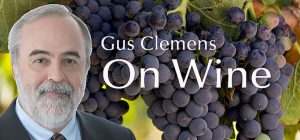Bitter news wine lovers must face: wine has carbohydrates. Carbohydrates produce calories. If you contemplate dieting, counting carbs/calories is part of the deal.
Carbohydrates—sugars and starches—are one of three principal types of nutrients our bodies use as an energy source. Fats and proteins are the others. All produce energy for our bodies. Calories are the measurement of that energy. Wine calories come from sugar carbs.
Nutritionists recommend adults get 45-65% of calories from carbohydrates. So far, so good, wine drinkers. Some 20-25% should come from fat; 10-35% from protein.
Fortunately, wine calories are not “empty” calories, but—depending on the wine—they can supply a significant percentage of your recommended caloric intake. That’s why it is hard to lose weight without tailoring your wine consumption. Here’s what you need to know:
• The average bottle of wine contains 600 calories; the average glass 120 calories (four grams of carbohydrates).
• Champaign, cava, spumante, sparkling wines that are dry (brut, extra brut) have almost no carbs/calories. Sweet sparklings have carbs—they are sweet because of residual sugar.
• The drier the wine—of any type—the lower the carbs. Dry means low residual sugar.
• Rosé wines have fewer carbs than red wines. Again, go for dry.
• Pinot noir and sauvignon blanc are very low in carbohydrates.
• Red wines in general have more carbs. See the next bullet point.
• Carbs usually are proportional to alcohol content. Lower ABV (alcohol by volume), fewer carbs. Red wines typically have highest ABV.
• Non-alcoholic wines have carbs. Alcohol may have been removed or significantly reduced, but that does not remove carbs.
• Wines that tout themselves as “low carb” may have removed carbs in a lab, but the process usually removes tastes, too.
• Wines costing less than $12, especially those with “critter” labels or other gimmicks, almost always have higher carbs because sugar has been added to sweeten the taste and hide imperfections.
• Wine carb hacks: drink less wine. Mix your wine with soda water (works best with whites) while drinking same number of glasses. Drink lowest carb/calorie wines.
Tasting notes:
• Vilarnau Cava Brut Reserva, Barcelona, Trencadís Edition NV: Crisp, refreshing, creamy, checks all the boxes. $10-13 Link to my review
• Famille Perrin La Vieille Ferme Réserve Rosé NV: Fruity with appealing softness. Fun wine, will please plenitude of palates. $14-17 Link to my review
• Sterling Vineyards Sparkling Rosé: Plenty of tasty strawberries, red fruits. Food-friendly acidity, tartness. $22 Link to my review
Last round: How much do you spend on a bottle of wine? Between half an hour and 45 minutes.

